Cossé-le-Vivien: a speck of a village in the Mayenne Department in the Pays de la Loire region of France, equidistant from Le Mans, Nantes, and Caen, in a region not on many tourists’ itinerary . But, oh! If you go! A wondrously bizarre environment beckons you in with jaw dropping sculptures.
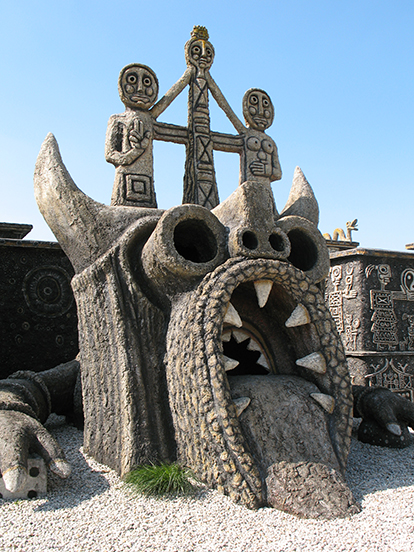
This Outsider environment, La Frénouse, was created by Insider artist Robert Tatin. La Frénouse is a tour de force in concrete that took Robert Tatin twenty years to complete with the help of–you guessed it–his wife, Lise. (Do you think it might be relevant that Lise was his fifth wife? Wonder what he asked of the other four) )
OK, let’s start at the beginning. Robert Tatin was born in 1902 of humble origins in nearby Laval. His father worked for the fairgrounds setting up and even performing in the local circus, an environment which had lasting impact on Tatin’s aesthetics. Robert Tatin began his working life at age fourteen as a house painter. As a young adult Robert Tatin took off for Paris to study painting.
When he completed his studies at the school of Beaux Arts he returned home to earn a living. Lord knows, that wasn’t going to be as an artist! He morphed this first profession as house painter into decorative painter, then designer, and eventually he became a sought after restorer of historic architecture. With extra cash in his pocket from his successful contracting business Robert Tatin set off to travel the world…and to paint!
He was called back to France in 1938 to serve in the war after which he set up a small ceramic and fresco workshop to earn a living. in Paris. He also began to pursue his painting in earnest.

While in Paris he formed friendships with several of the great artists living in Paris post World War II: Giacometti, André Breton, Jean Dubuffet (inventor of the term Art Brut), and Jean Coctueau (of Beauty and the Beast fame). With these colleagues, Tatin participated in what was called the “cultural reconstruction” of post war Paris. Tatin’s painting and sculpture garnered him national and eventually international recognition. He even won first prize in sculpture at the Sao Paulo Biennial in 1951. But it was his travels and encounters with indigenous people of Brazil that had the greatest influence on his artwork.

He quit the rarefied world of fine arts at the age of 60, returned to his homeland to live out the rest of his life. He bought a little ruined farmhouse in Cossé-le-Vivien and got to work restoring it.

Once this cozy home was livable, Robert Tatin started work on what turned out to be his grand oeuvre, which was to take him the next twenty years to complete. There is really no easy way to categorize or even to describe with words the sculptural environment that Tatin called, La Frénouse. When I checked google translate for the definition of La Frénouse, I got this for an answer: La Frénouse. OK, well…
La Frénouse is first an homage. One enters the property via Tatin’s “Alley of Giants”,

an 80 meter long paved path lined with nineteen statues, each labeled with the names of a historic, mythical, religious, or artistic personage who influenced Tatin to believe what he believed in and to have the guts to pursue his vision. It’s quite a roster ranging from Joan of Arc (!) to Jules Vernes to Picasso.






By the time you come to the end of the Alley of Giants you are well-prepped for the bizarro aesthetics that Tatin poured into his garden, an odd combination of grotesque fantasy embedded with lyrical details.



The open-jawed dragon that headed up this post is the Guardian of Knowledge. If you are not totally swallowed up by him you’ll see his claws cradle dice, for surely chance plays a huge role in one’s fate.
At the center of the environment one enters the garden of Meditations, with twelve statues around a central reflecting pool, one for each month. Six rooms symbolize the rotation of the earth. One enters via the Gateway of the Sun and the Gateway of the Moon on the East and West sides.








But really, it’s good not to over-analyze Tatin’s work. Scientist and art lover Otto Hahn put it nicely when he said of Robert Tatin’s creative impulse: “In all his quests, Tatin finds the same answer: you never reach paradise, unless you create it.” And truly isn’t this what we’re doing as artists in our insane world?














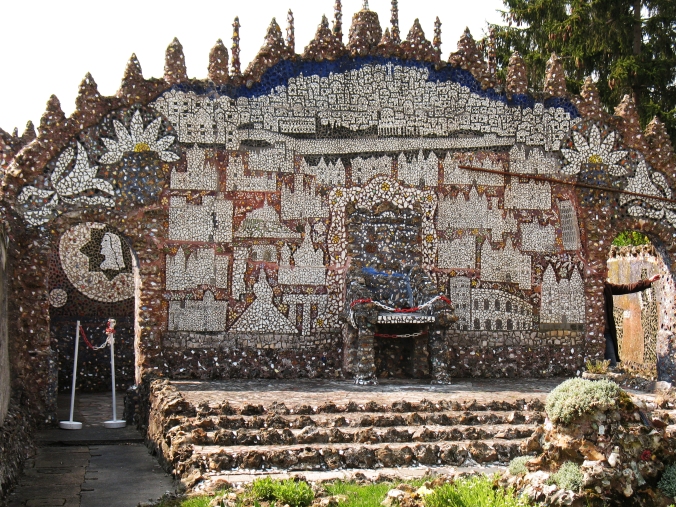

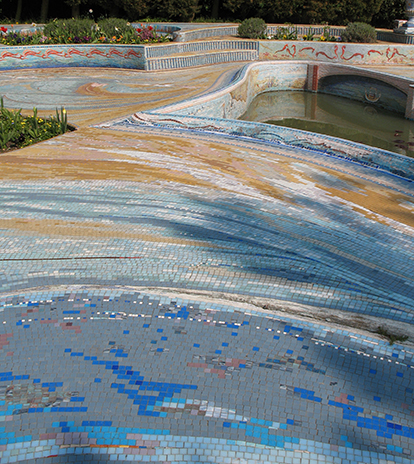
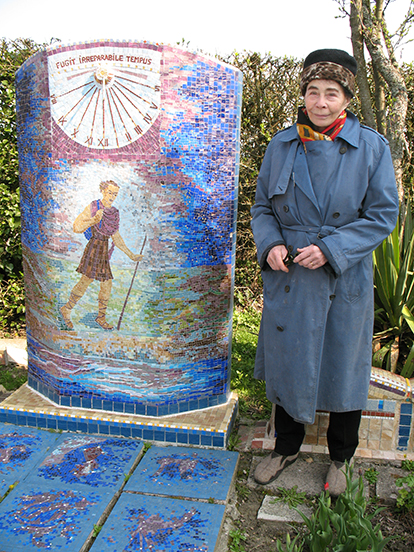
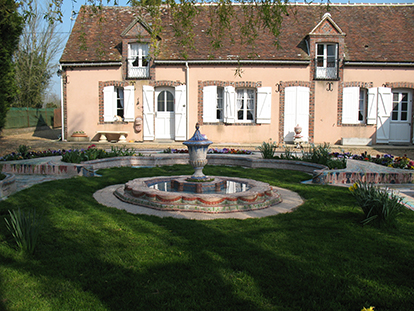
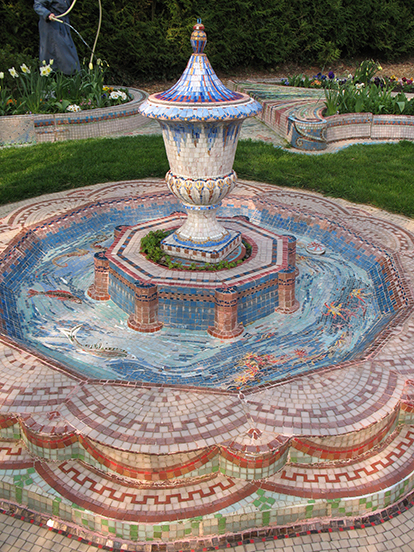


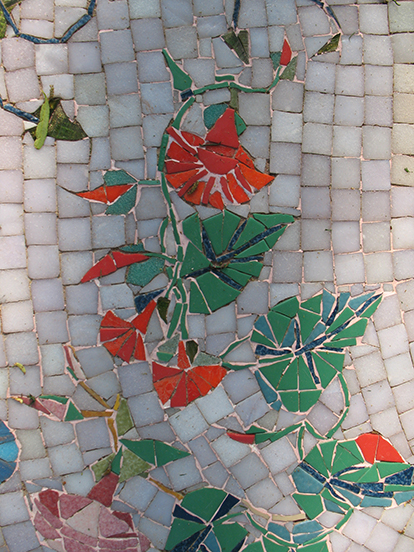
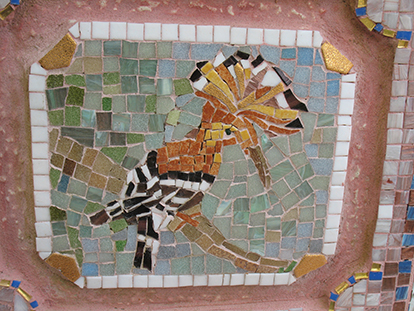
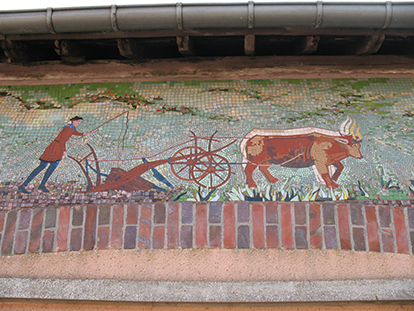
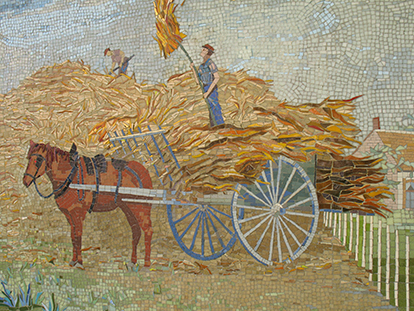
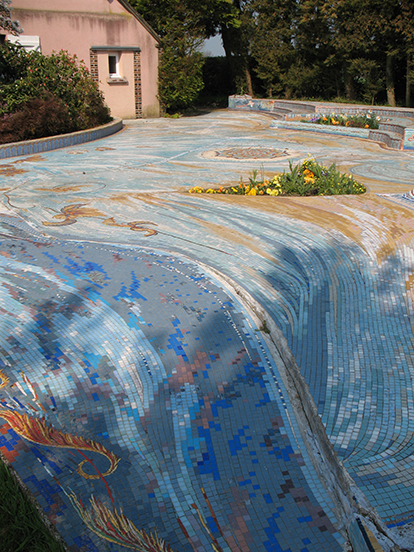
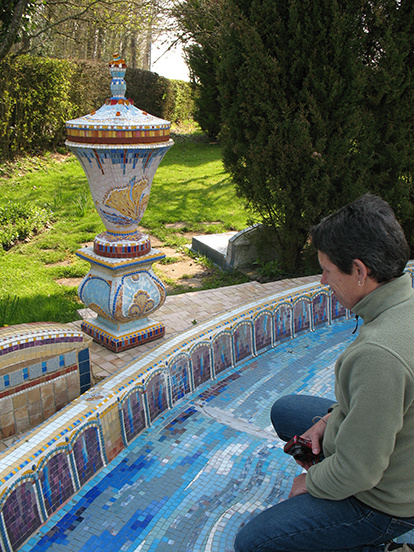
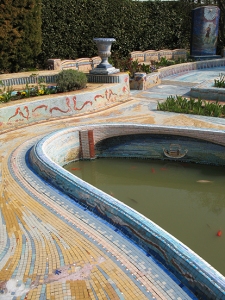
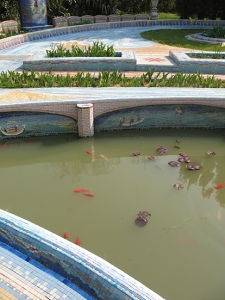
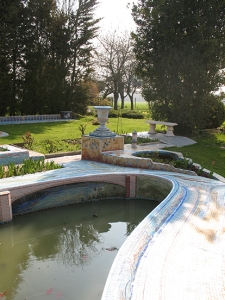
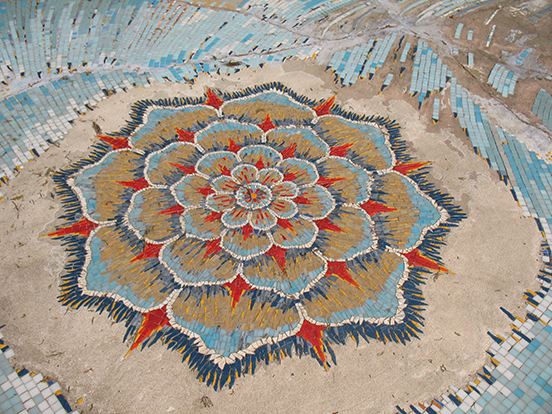



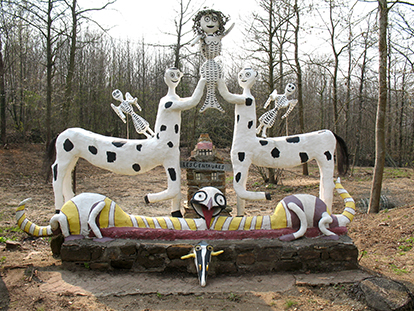


























































 T
T
















































